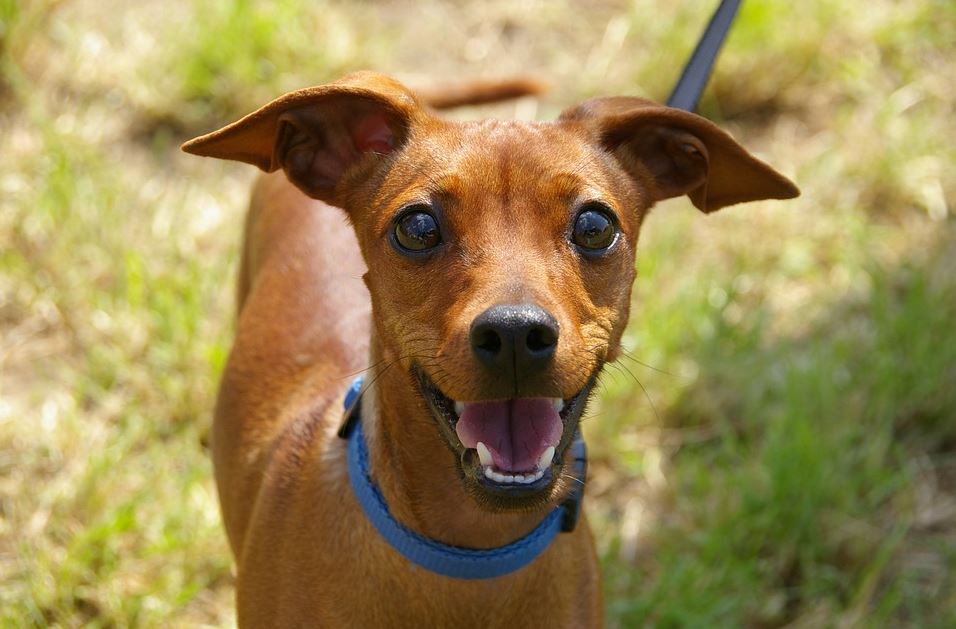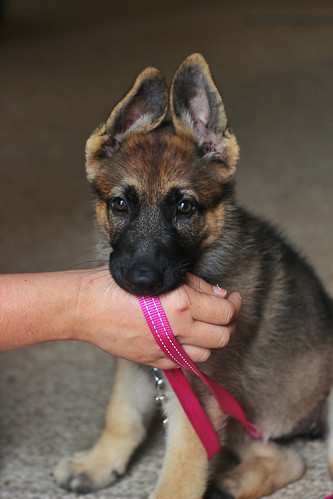5 Tips on Training Your Dog Not to Bite
Guest Writer: Dixie Somers
Puppies and dogs can bring a lot of joy into your home. Your pet really can become your best friend. A dog that bites can be another story, however. Dog bites aren’t just painful. They can place you at risk of an expensive lawsuit if your pet bites someone else. As a pet owner, you can be held liable for your dog’s actions. Training your dog not to bite will take some work, but with a few simple strategies, you can do it. Here are five tips for training your dog not to bite.

Start Early
If possible, begin bite-training your dog as early in their life as possible. Puppies taught not to bite from a young age are generally easier to train, and the training is usually more effective. This doesn’t mean your old dog can’t learn a new trick, however. If you’re bringing a full grown dog into your home, you can still effectively train them by starting the process right away. Ensuring your new pet, regardless of their age, understands the rules of the household from the beginning will help prevent biting issues.
Yelp
Puppies usually learn bite inhibition, or the act of gentle mouthing instead of dangerous biting, by interacting with their puppy brothers and sisters. During play, if a bite is too hard, the bitten puppy yelps. It’s the dog version of a person yelling “ouch!” The sound is startling and teaches puppies not to bite each other too hard. When your pet bites harder than is appropriate, let out a loud yelp or sharp command to remind them to be gentle.
Use Negative Consequences
Providing a punishment when your dog bites shows them that their behavior is unacceptable. Consequences should be as immediate as possible so that your pet understands why they are being punished. Ignoring your puppy and refusing to play for a full minute, putting your dog in time-out in another room, or taking away a toy or favored item for a short time are appropriate punishments.
(Animal Bliss Insert: Please, NEVER hit, use force, choke with leash, or otherwise bully your dog into submission. This is cruel, causes fear, and may produce negative results. Check out Positive Reinforcement Dog Training Books on Amazon.)
Add Positive Reinforcement
When your dog exercises bite inhibition by gently mouthing instead of biting, chooses a toy to play with instead of attacking hand or ankles, or refrains from biting in a situation they normally would have, reward them. Extra play time, pets and cuddles, kind words, or a treat will show your pet you approve of their behavior. Using this method in conjunction with offering negative consequences makes it clear to your dog what you like and what you don’t.
Socialize Your Pet
As you progress with your pet’s training, you need to introduce them to other people, animals, and places. Socializing as a portion of their training teaches your dog how to behave around others and what is appropriate outside of your household. Use your training tips if you have guests over, when taking a walk around the neighborhood, or while visiting a local dog park. This step is essential to making sure your dog doesn’t bite.
Using these tips consistently, you should be able to teach your dog appropriate behavior and bite inhibition. This increases your pet’s chance of survival – biters are often euthanized. It also reduces your risk of liability in a dog bite lawsuit. For more information about dog bite lawsuits, visit a firm like Knochel Law Offices PC. Knowing how these lawsuits work can help you know how best to restrain, train, and contain your dog when guests are over.
5 Tips on Training Your Dog Not to Bite
 GUEST AUTHOR BIO: Dixie Somers is a freelance writer who loves to write for women’s interests and the home niches. She lives in Arizona with her husband, three beautiful daughters and a spunky Jack Russell Terrier who makes life interesting.
GUEST AUTHOR BIO: Dixie Somers is a freelance writer who loves to write for women’s interests and the home niches. She lives in Arizona with her husband, three beautiful daughters and a spunky Jack Russell Terrier who makes life interesting.
OTHER ARTICLES BY DIXIE:
- 4 Things First Time Dog Owners Need
- How to Choose the Best Food for Your Pet
- Animal Allergies : 5 Helpful Things Pet Owners Should Know
- Pregnant Cat? 5 Ways to Make Her Feel More Comfortable
5 Tips on Training Your Dog Not to Bite #dogs #dogTraining Share on X
***
A QUESTION FOR YOU: Is there anything you would like to add here? Have you used these methods to train your dog?
*** Leave a comment below and remember to share. ***
*
It’s just sexy!

As always, thank you for taking the time to visit my blog!
♥ PEACE ♥
Disclosure: Animal Bliss is an affiliate of Amazon and will earn a (very small) commission from purchases made through links on this website.
(Coffee money – thank you!)
😀
- 5 Degrees for Animal Lovers: Animal Careers - September 16, 2018
- Signs of Age: How to Care for an Elderly Pet - May 11, 2018
- Your First House Pet: Tips for Ownership and Care - March 22, 2018





My dog was over a year old when we rescued him. He had learned to bite when scared and bite in frustration. We were not aware of this when we brought him home. It took quite a while to train this out of him. It was doubly hard because once we got him home, he decided he could not be touched. He touches us and is very loving, but we cannot pet him. He is now three and a half years old and we still cannot pet him. We use kind words and treats as rewards. He has recently reverted back to biting. Rainy days bring frustration because he cannot go outside like he likes to. Do you have any suggestions for how to deal with this? We have a grandchild on the way and would not like to have to make a choice between our pet and our grandchild.
Oh, you do have a problem on your hands. Breaking any habit of a dog, especially a 3 1/2-year-old dog, is difficult but not impossible. I would suggest you look for a dog trainer for methods to use with him. Do you have obedience classes you could go to? It will take patience and time. Does he break the skin? I would hate to see you give the poor guy back for adoption. All the best to you and good luck in finding a trainer nearby who can work one-on-one with you and your dog. Thanks for your visit to Animal Bliss.
Thank you for visiting my blog, Kim. Yes, I think you’re absolutely right, in that socializing your dog is the best way to teach them some disciplines, such as not biting too hard. I would be devastated if I had a dog that had to be put down because he wasn’t taught any better. Your Etsy shop is lovely, by the way. I love your jewelry. I used to be a jeweler too, many years ago, in another lifetime. It was fun. All the best to you! 🙂